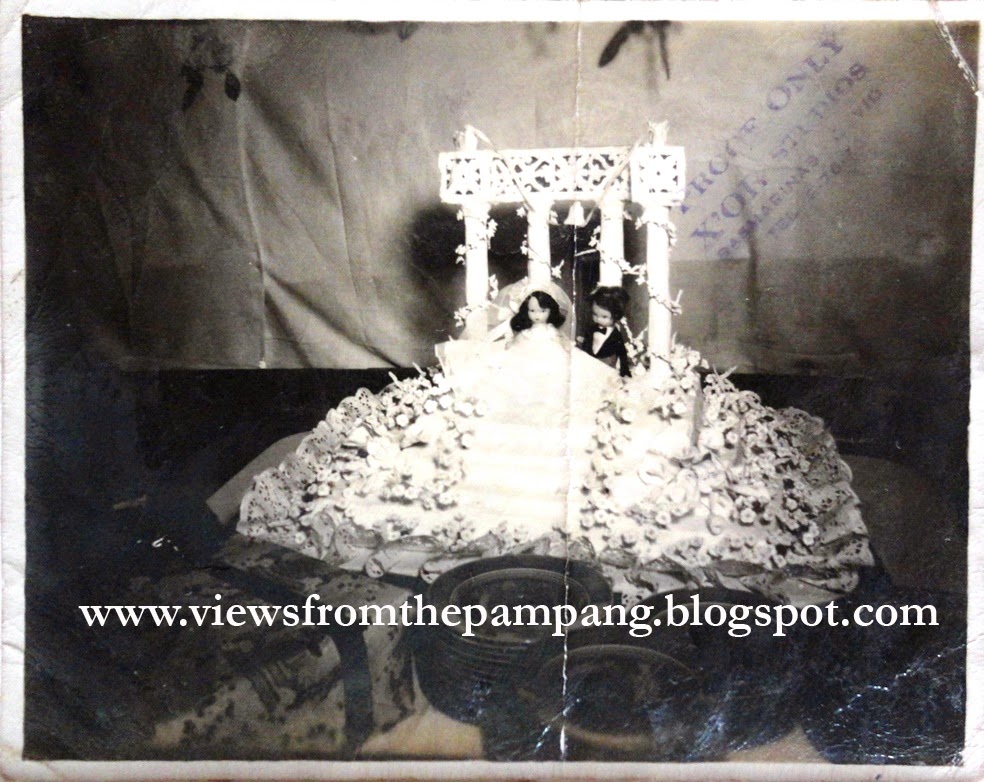CHOO-CHOO TRAIN, A-CHUGGING DOWN THE TRACK. Passengers at the Dau Station in Mabalacat, wait to board a a train to Magalang, via a spur railroad track. ca. early 1920s.
Pampanga’s historic train stations have been in the news lately, most recently with the announcement that the old Angeles Station along Villanueva St. will be fully restored by 2016 through the generosity of a local benefactor. Much earlier, the heritage-conscious city government of San Fernando rebuilt their very own San Fernando Train Station located at the Brgy. Sto. Niño, with the assistance of the Tourism Insfrastructure and Enterprise Zone Authority (TIEZA). Since then, the train station has become a must-see tourism landmark.
The train stations of Angeles and San Fernando, along with those of Apalit, Sto. Tomas and Mabalacat, were part of the second portion of the Manila railroad line inaugurated on 22-23 February 1892 by Governor-General Eulogio Despujol and Manila Archbishop Bernardo Nozaleda . The province was thus connected to Manila and Bulacan through these “iron horses” that eventually were expanded all the way to Dagupan.
By the 1920s and 30s, under the American regime, the Manila Railroad Co. had a flourishing transport business that promised safe travels on air-conditioned coaches at low-express charges. Connecting trips to Baguio were arranged through the Benguet Auto Lines at Damortis—for only Php 14.33, one way (1929 rate).
Both San Fernando and Angeles stations hold special historical significance for Filipinos. San Fernando was where Dr.Jose Rizal debarked on 27 June 1892 for a quick visit of the town; it was where he also boarded a train to continue his trip to Bacolor.
The stations also figured prominently in the infamous Death March of World War II. The railway station in San Fernando was the end point of the march of Filipino and American soldiers. Here, on April 1942, they were loaded on trains that took them to Camp O’Donnel, Tarlac.
On April 10, the packed trains reached the town of Angeles where patriotic residents were on hand to surreptitiously hand out food, water, sugar, medicines, milk, cigars and other provisions to the hungry and weary soldiers. Brave Angeleños showed their support by keeping pace with the trains up to Dau Station, some 4 kilometers away.
After the War, the lines of the Manila Railroad Co. were rehabilitated and its major services restored. The trains were modernized, their steam engines replaced by diesel. By the mid 50s, one could enjoy all the cozy comforts and convenience of the railway from its clean berths to delightful meals either in the coach or in the dining car.
I remember that as late as the 1960s, my father used to save on his car trips by taking the train at the Mabalacat Station near the Clark entrance, to visit my aunt in Manila. He would get off at the final stop in Tutuban, and just take a jeep to Herran, where my aunt resided. Sure, it took longer, but it was more cost-efficient, and definitely more scenic!
Today, the Mabalacat Station still stands but the dilapidated structure is now home to informal settlers. Hopefully, the local government will find merit in restoring the station, in the same way that San Fernando has successfully rebuilt theirs and declared by the National Historical Institute as an “Important Cultural Property”.
























